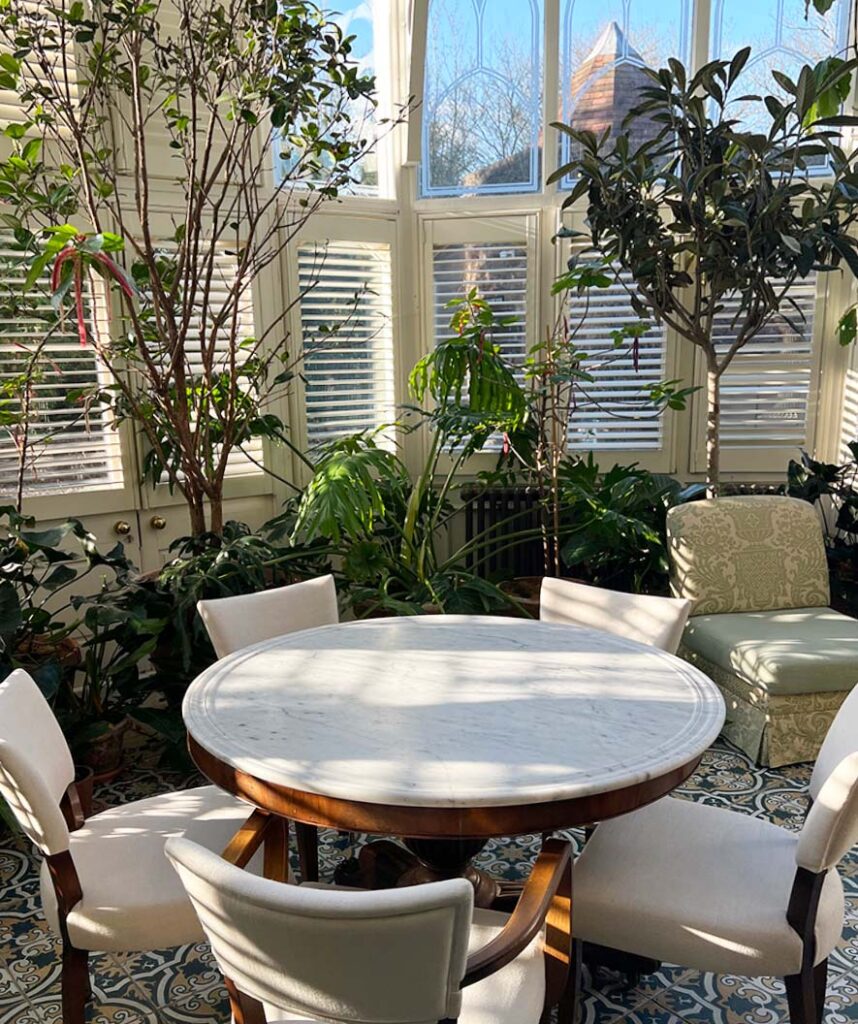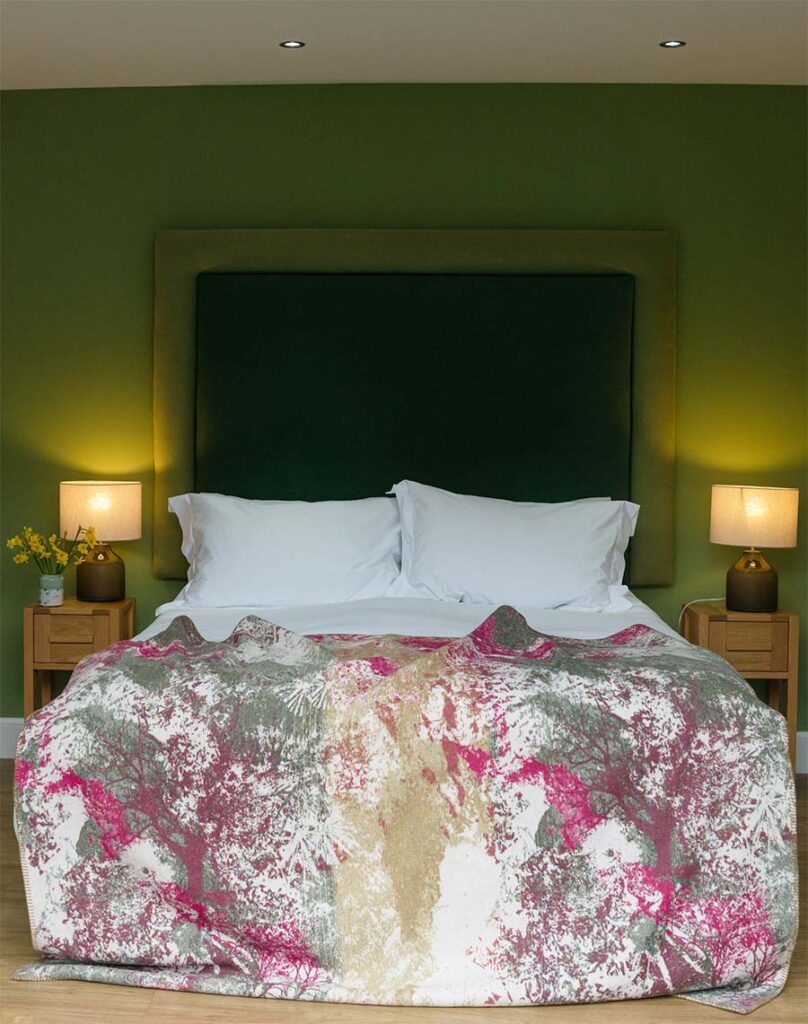No products in the basket.
From creatives to creatives, ESTILA Voices amplify the untold stories of our community, sharing thoughts and opinions for anyone interested in small independent lifestyle and design industries.
Blending various creative disciplines; from art, music to design, each story features external links for you to immerse yourself in and get inspired by. ESTILA Voices are highly curated, and we therefore encourage you to stop and click through to further explore the topic or subject. They are not affiliated links, which gives us the freedom to include the best content in our ESTILA Voices articles.

A personal research journey into one of the most talked about design concepts
Written by Pauline de Villiers Brettell
There is something about the word biophilic that, to me, sounds a little beige – but maybe that’s just me? In fact, nothing could be further from the truth as, like so many trends, it is an idea, a concept, a philosophy, that is wide open to interpretation and application, allowing you to be as bold {or as beige} as you wish!
On many levels, it is something that we do innately when we decorate, design, and define our spaces, as Biophilic Design is simply about connectivity. It’s about connecting both ourselves and our homes and workplaces to nature.
Choosing to put fresh flowers next to your bed, or a well curated cactus in the kitchen is certainly part of the idea, but Biophilic Design goes beyond a strategically placed pot plant – it is a considered process linking several aspects of interior design to the natural environment. It is about looking at the big picture, and importantly, it is about creating a healthy space.
One of the reasons it is getting a lot of airtime right now is because it clearly feeds directly into the zeitgeist of the moment as we are talk about a new Care Economy, and all that that means. Biophilic Design is about more than just the aesthetic, or how things look, it is about how things work, and importantly how these things then make us feel.
It is a way of introducing wellness and wellbeing into and via our built spaces by integrating nature, rather than using the walls of our homes and offices to separate us from nature. The benefits of this are multi-dimensional and are all about reducing stress, improving creativity along with general wellbeing and healing. With these values at its core, it is self-explanatory why it is seeing a revival of interest and debate.
Biophilic Design can be used to address issues that are affecting society more broadly like climate change, right through to assisting the individual in their home by improving mental health. It is quite simply about taking inspiration from the natural world and communicating this through design. And if all the elements of design are considered within this broad principle, from light to air flow, patterns to materials, we should, according to the biophilic mantra, be heading for a happier, healthier environment. But don’t take my word for it . . . there has been a lot written about Biophilic Design as it is not a new concept, and there is plenty of information and inspiration out there.
So rather than write another article running through the same points, I thought it would be more useful, and hopefully a little more fun and inspiring, to point you in the direction of some pictures, posts and links that will start you on a multi-dimensional biophilic journey . . .or, as in my case, take you down the Biophilic rabbit-hole I discovered, spanning several online platforms.
For a comprehensive explanation of Biophilic Design the creative design agency Terrapin Bright Green have put together a report titled The 14 Patterns of Biophilic Design where they run through the ideas and principles underpinning the concept.
Starting from bringing nature in on a literal level, right through to the use of nature’s order and geometry in design, while discussing concepts of refuge and mystery, while exploring how all this feeds into a greater sense of wellbeing.
If this ignites an interest and you want to learn more about Biophilic design and how it can inform your use of colour, designer Claire Gaudion has developed an online course where she shares both the inspiration that informs her textile designs, as well as the experience and expertise in working and designing with colour inspired by nature which she has learned on her own Biophilic journey.
For a more personal, but no less thorough, interior design take on the concept, Marianna, the creative spirit behind the Wooden Hill Blog has written a post aptly titled The Story of An Accidental Biophiliac where she takes a look at how Biophilic Design is something that often (apologies) comes naturally! If you read right through to the end there are also a few handy hints on how to make a living wall!
I have been known to spend many hours clicking and saving inspiration on Pinterest – an activity best done in the quiet morning hours along with a strong cup of coffee in my opinion. So naturally, while working on this post I headed over there and typed in the words Biophilic Design… the result was a brand new board on my page, a cold cup of coffee and a lot of time spent looking at the pinned images of DforDesign whose design ethos is all about sustainability and biophilic design – and if, like me you click and follow from image to image to link to website you will even find a post on her blog that takes you to Vacation Rentals to Reconnect with Nature.
While Biophilic Design is not prescriptive and about “on trend” colours, we are nevertheless seeing an interpretation of these principles that leads to trends in both colour and materials. Anyone else noticing a lot of green out there? As mentioned in this Milk Decoration piece, Pantone might have decided that yellow and grey are the colours for 2021, but decorators have decided differently.
Continuing with the olive green conversation we can also see how the biophilic trend is crossing over into all sectors of design. Taking inspiration directly from nature, connecting with our environment and making sure it is all falling under the umbrella of the “greater good” is this nail polish – COMPOST. Who needs an allotment when you can include splash some compost on along with your manicure!

” While Biophilic Design is not prescriptive and about “on trend” colours, we are nevertheless seeing an interpretation of these principles that leads to trends in both colour and materials.”
While the beauty industry discusses concepts like clean beauty, the fashion industry continues its debate on ethical and sustainable production. Designers across all disciplines are looking to nature and the environment for inspiration – with some, like this Blendscape Collection referencing nature very directly and fusing fashion and art directly with the natural landscape.
With the use and choice of materials being key, the Biophilic Design mantra is also informing a lot of the high street trends we are seeing – the use of rattan and wicker, natural grasses, wood and other natural materials are all part of this. It is all about incorporating organic textures and materials into our homes while revisiting materials that have been around the design block a few times with a new design eye.
Natural materials and organic shapes and textures automatically add warmth to a space while there is something reassuring about knowing exactly what and how the things you surround yourself with are made.
While the very nature of Biophilic Design leans towards natural materials and therefore a colour palette that reflects this, we can also look to nature for colourful exuberance. Designer Tricia Guild has been doing this for years and the point is also beautifully made in this biophilic café in London by designer Morag Myerscough. This inspired design quite literally brightens up the days of the office workers who use it and clearly illustrates that Biophilic Design is not necessarily all about wood and wheatfields!
The statistic that most of us spend around 90% of our time inside our homes/office/workplace. Our connection to nature and its rhythms needs to be part of this 90% rather than relegated to the 10% downtime.
To integrate Biophilic Design successfully, we need to recognise how much our physical and mental wellbeing relies on our connecting to the world beyond our wall. Quite simply, Biophilic Design is good for you, so using it as a design tool seems like a no-brainer!
Finally, before you turn the page on this Biophilic debate – click on this link to be mesmerised by this music video by Bjork. I stumbled across it while clicking and searching and generally getting sidetracked . . .Bjork has always pushed artistic boundaries in both music and fashion and this video is, to me, a mesmerising visual that is almost like a bit of biophilic animation!


Pauline de Villiers Brettell
Pauline is a designer, writer and traveller as well as owner of Tea in Tangier, an inspirational Moroccan blog and shop.
Follow Pauline: IG @teaintangier

We are a media and membership platform for design-led brands, interior designers and artists. Find latest industry news, insights, products, projects and contacts.
Join our “In the Loop” fortnightly design & art newsletter and never miss latest news from the industry.
CONNECT & LEARN
Copyright © 2015-2024 created and managed by STUDIO/ESTILA. All rights reserved | Terms & Conditions | Privacy Policy | Cookie Policy | Refund Policy